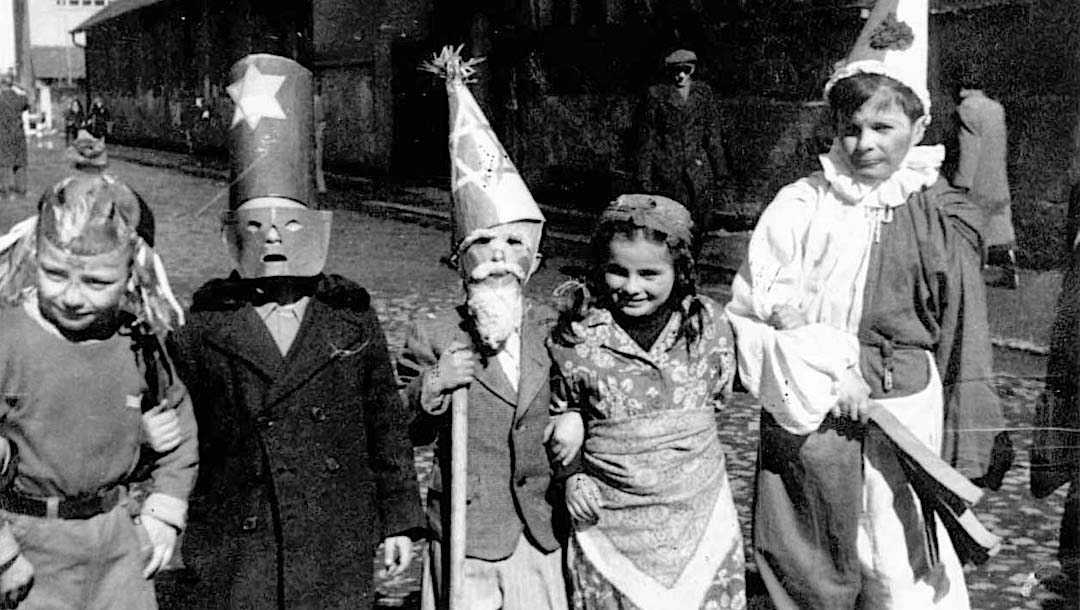JERUSALEM (JTA) — A colleague on the faculty of Pardes, the learning community based in Jerusalem, described to me how in her community, the annual Purim parade is quite joyous. Yet in that small town, five families have lost sons in the war that began on Oct. 7.
How can we possibly be joyous on Purim this year? How to celebrate amidst such mourning? Should the parade be canceled? Or must it go on?
There is so much to mourn: the terrible events of Oct. 7, the incomprehensible suffering of the hostages being held by Hamas, the ongoing war and the daily toll it is taking. I have not even mentioned the resurgence of antisemitism in the United States or the many other tragic events taking place around the world.
And yet, we are told to “increase our joy” in this month of Adar (this year it’s two months, due to the leap year) in anticipation of Purim, the holiday that begins this year on the evening of March 23.
Is anyone in the mood?
It is difficult — but I think Jewish tradition and Jewish history offer us some models.
Jewish tradition recognizes that there is no “full cup” of joy, nor one of unmitigated sadness. At a wedding, an occasion full of joy and hope, the groom ceremoniously breaks a glass to remind us that all is not well. Even at this moment of pure happiness, we are instructed to remember the destroyed Temple, and more generally, that we still live in a broken world.
In a similar vein, there are limitations on mourning. When the period of shiva is over, the custom is that the mourner is accompanied outside and walks around the block, signifying the need to return to the world. The laws of mourning are then eased as one moves to the 30-day period, shloshim.
This is what life is: a mixture of joy and sadness, of things we are grateful for and things we dread. Life is not black or white; rather we alternate from one to the other and back again, sometimes feeling them both at once.
In Krakow stands the oldest surviving synagogue in Poland: the Alta Shul, built in the 1400s, probably before the European discovery of America. A few centuries ago, on a different tragic Simchat Torah, a group of Jesuit students interrupted the celebrations and took away the Torah scrolls from the Jews.
How could the community ever celebrate that holiday again? They did. But they instituted a way to remember that tragedy: for one of the hakafot — the normally joyous “parade” of the Torah scrolls — they would not sing and dance but would sit on the ground in mourning as if it were Tisha B’Av, the fast day. With the next hakafah, the singing and dancing would resume.
Fast forward to the 1970s and 1980s, as Jews all over the world struggled to help the brave Soviet Jewish activists who were trying to emigrate to Israel. My synagogue in Manhattan observed a “silent hakafah,” without song and dance, to remember “The Jews of Silence” (the title of Elie Wiesel’s important book about Soviet Jews trapped behind the Iron Curtain). After the silent hakafah, the celebrations resumed.
We Jews have a very strong sense of memory. Yosef Hayim Yerushalmi, the late Columbia University historian, wrote that “remember” is written 169 times in the Hebrew Bible. We remember our slavery in Egypt, we remember the many tragedies that have befallen our people. But we do not get stuck in the past — we move on, and we celebrate life, not death.
We see this after a terrorist attack in Israel. There is a remarkable sense of solidarity, there is great sadness. Yet very quickly the blood is washed away and life at that very spot resumes.
Perhaps the best model for us is those who survived the Holocaust. The survivors of the Shoah managed to celebrate Purim in the immediate aftermath of the war, even in the Displaced Persons camps. In 1946 in Landsberg, we have photos of them in costumes; one of them even dressed up as Hitler (!), and they “hanged” him as part of their celebrations. They did not despair or wallow in self-pity. Instead, they built a future: They married, they had children, and they agitated, advocated, and fought for a Jewish State.
So we certainly don’t have the right not to move on in our lives; we need to celebrate what deserves celebration.
I suggested to my Pardes colleague that the parade should happen, but they should stop at each of the five homes of the fallen for a few minutes of prayer, appropriate song, and as she suggested, reciting Psalms.
In the Scroll of Esther, read on Purim, we are told “v’nahafoch hu,” that “everything flips”: the impending tragedy is averted, the persecutor is brought to justice, and sadness becomes joy.
Our Torah teaches us, “Choose life!” We must choose life to its fullest, even as we remember and mark the tragedies around us. And this year we need “v’nahafoch hu” more than ever.
JTA has documented Jewish history in real-time for over a century. Keep our journalism strong by joining us in supporting independent, award-winning reporting.







